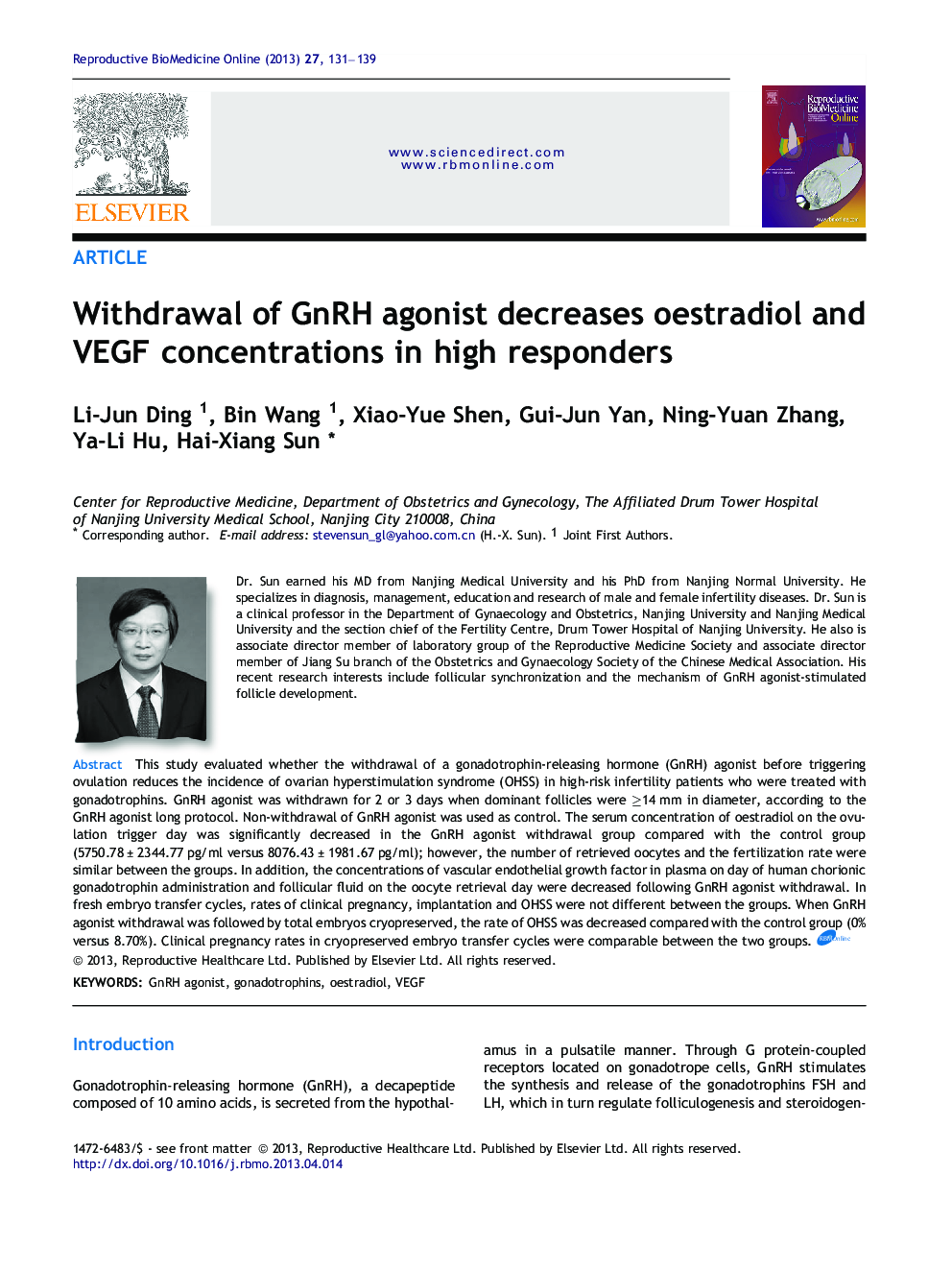| Article ID | Journal | Published Year | Pages | File Type |
|---|---|---|---|---|
| 3970308 | Reproductive BioMedicine Online | 2013 | 9 Pages |
This study evaluated whether the withdrawal of a gonadotrophin-releasing hormone (GnRH) agonist before triggering ovulation reduces the incidence of ovarian hyperstimulation syndrome (OHSS) in high-risk infertility patients who were treated with gonadotrophins. GnRH agonist was withdrawn for 2 or 3 days when dominant follicles were ⩾14 mm in diameter, according to the GnRH agonist long protocol. Non-withdrawal of GnRH agonist was used as control. The serum concentration of oestradiol on the ovulation trigger day was significantly decreased in the GnRH agonist withdrawal group compared with the control group (5750.78 ± 2344.77 pg/ml versus 8076.43 ± 1981.67 pg/ml); however, the number of retrieved oocytes and the fertilization rate were similar between the groups. In addition, the concentrations of vascular endothelial growth factor in plasma on day of human chorionic gonadotrophin administration and follicular fluid on the oocyte retrieval day were decreased following GnRH agonist withdrawal. In fresh embryo transfer cycles, rates of clinical pregnancy, implantation and OHSS were not different between the groups. When GnRH agonist withdrawal was followed by total embryos cryopreserved, the rate of OHSS was decreased compared with the control group (0% versus 8.70%). Clinical pregnancy rates in cryopreserved embryo transfer cycles were comparable between the two groups.This study was a prospective, clinical and laboratory study of 96 patients (corresponding to 96 cycles) with high antral follicle counts, who were at high risk for ovarian hyperstimulation. The study was carried out between May and September 2012. Gonadotrophin-releasing hormone (GnRH) agonist was withdrawn in 47 cycles for 2 or 3 days when the dominant follicles were ⩾14 mm in diameter, according to the GnRH agonist long protocol. The non-withdrawal of GnRH agonist in 49 cycles was used as the control. The serum concentrations of oestradiol on the ovulation trigger day were significantly decreased in the GnRH agonist withdrawal group compared with the control group (5750.78 ± 2344.77 pg/ml versus 8076.43 ± 1981.67 pg/ml; P < 0.001); however, the numbers of retrieved oocytes and fertilization rates were similar between the two groups. In addition, the concentrations of VEGF in plasma on the day of human chorionic gonadotrophin administration and follicular fluid on the oocyte retrieval day were decreased following GnRH agonist withdrawal. In fresh embryo transfer cycles, the rates of clinical pregnancy, implantation and ovarian hyperstimulation syndrome (OHSS) were not different between the two groups. When GnRH agonist withdrawal was followed by cryopreservation of all embryos, the rate of OHSS was decreased compared with the control group (0% versus 8.70%). Clinical pregnancy rates in vitrified–warmed embryo transfer cycles were comparable between the two groups. The appropriate withdrawal of GnRH agonist, before triggering ovulation, decreased the concentrations of oestradiol and VEGF in patients undergoing ovarian stimulation, which may reduce the incidence of ovarian hyperstimulation.
